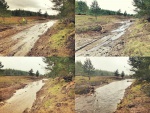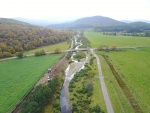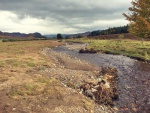Case study:Upper River Nairn restoration project: Difference between revisions
Jump to navigation
Jump to search
No edit summary |
No edit summary |
||
| Line 56: | Line 56: | ||
|Monitoring Other contact surname=Moir | |Monitoring Other contact surname=Moir | ||
}} | }} | ||
{{Motivations}} | {{Motivations | ||
|Other motivation=To restore a heavily modified section of the Upper River Nairn back to a more natural state whilst also reducing the risk of flooding to protect agricultural interests | |||
}} | |||
{{Measures}} | {{Measures}} | ||
{{Hydromorphological quality elements header}} | {{Hydromorphological quality elements header}} | ||
Revision as of 12:23, 15 February 2019
This case study is pending approval by a RiverWiki administrator.
Location: 57° 18' 0.85" N, 4° 16' 53.02" W
Left click to look around in the map, and use the wheel of your mouse to zoom in and out.
Project overview
| Status | Complete |
|---|---|
| Project web site | |
| Themes | Environmental flows and water resources, Fisheries, Flood risk management, Habitat and biodiversity, Hydromorphology, Land use management - agriculture, Land use management - forestry, Monitoring |
| Country | Scotland |
| Main contact forename | Euan |
| Main contact surname | Anderson |
| Main contact user ID | User:Aberarder |
| Contact organisation | Aberarder Estate |
| Contact organisation web site | |
| Partner organisations | |
| Parent multi-site project | |
| This is a parent project encompassing the following projects |
No |
This case study hasn’t got a picture, you can add one by editing the project overview.
Project summary
This case study hasn’t got any project summary, you can add some by editing the project overview.
Monitoring surveys and results
This case study hasn’t got any Monitoring survey and results, you can add some by editing the project overview.
Lessons learnt
This case study hasn’t got any lessons learnt, you can add some by editing the project overview.
Image gallery
|
Catchment and subcatchment
Site
Project background
Cost for project phases
Reasons for river restoration
Measures
MonitoringHydromorphological quality elements
Biological quality elements
Physico-chemical quality elements
Any other monitoring, e.g. social, economic
Monitoring documents
Additional documents and videos
Additional links and references
Supplementary InformationEdit Supplementary Information
| ||||||||||||||||||||||||||||||||||||||||||||||||||||||||||||||||||||||||||||||||||||||||||||||||||||||||||||||||||||||||||||||||||||||||||||||||||||||||||||||||||||||||




